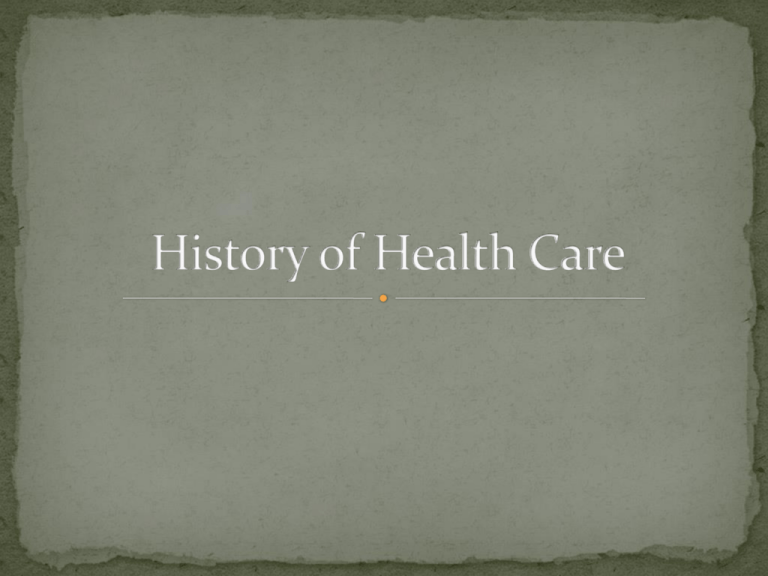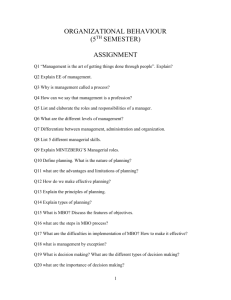History of Health Care
advertisement

Believed that illness and disease caused by supernatural spirits and demons Tribal witch doctors treated illness with ceremonies to drive out evil spirits Average life span was 20 years Earliest people known to maintain accurate health records Physicians were priests who studied medicine and surgery in temple medical schools Imhotep (2725BC?)may have been the first physician Average life span was 20-30 years Religious prohibitions against dissection resulted in inadequate knowledge of body structure Used acupuncture , or puncture of the skin by needles, to relieve pain and congestion Average life span was 20 to 30 years Began modern medical science by observing human body and effects of disease Hippocrates (460-377 BC) called the Father of Medicine Aristotle (384-322 BC) dissected animals and is called founder of comparative anatomy Average life span was 25 to 35 years First to organize medical care by providing care for injured soldiers Began public aqueducts to carry clean water to the cities Average life span was 25 to 35 years Emphasis was placed on saving the soul and the study of medicine was prohibited Monks and priests provided custodial care for sick people Average life span was 20 to 30 years Renewed interest in the medical practice of Greeks and Romans A pandemic (worldwide epidemic) of the bubonic plague (black death) killed ¾ of the population of Europe and Asia Average life span was 20 to 35 years Rebirth of the science of medicine First chairs (positions of authority ) of medicine created at Oxford and Cambridge in England in 1440 Average life span was 30 to 40 years Caused of disease were still not known and many people died from infections and puerperal (Childbirth) fever Scientific societies, such as the Royal Society of London, were established Average life span was 35 to 45 years First mercury thermometer was created Invention of bifocals for glasses James Lind prescribed lime juice containing vitamin C to prevent scurvy in 1795 Average life span was 40 to 50 years Royal College of Surgeons (medical School) founded in London in 1800 French barbers acted as surgeons by extracting teeth, using leeches for treatment, and giving enemas First successful blood transfusion was performed on humans in 1818 by James Blundell Bacteria causing gonorrhea and leprosy were discovered and identified Average life span was 40 to 60 years The first kidney dialysis machine was developed in 1944 Health insurance plans and social reforms developed in the 1920s First heart-lung machine was used for open-heart surgery in 1953 First successful heart transplant 1968 Birth control pills approved by FDA in 1960 First “test tube” baby, Louise Brown, was born in England in 1978 Acquired Immune Deficiency Syndrome (AIDS) was identified as a disease in 1981 A sheep was cloned in 1997 Average life span was 60 to 70 years Cures for AIDS, cancer, and heart disease are found Development of methods to slow the aging process or stop aging are created Transplants of every organ in the body, including the brain Average life span is increased to 90 to 100 years and beyond






